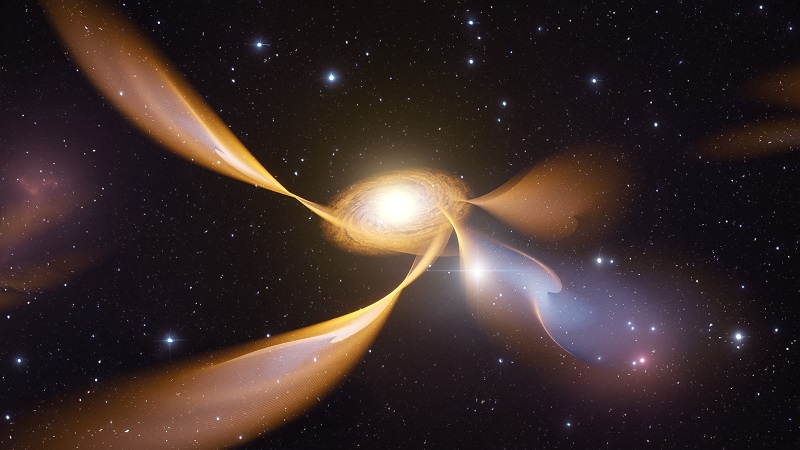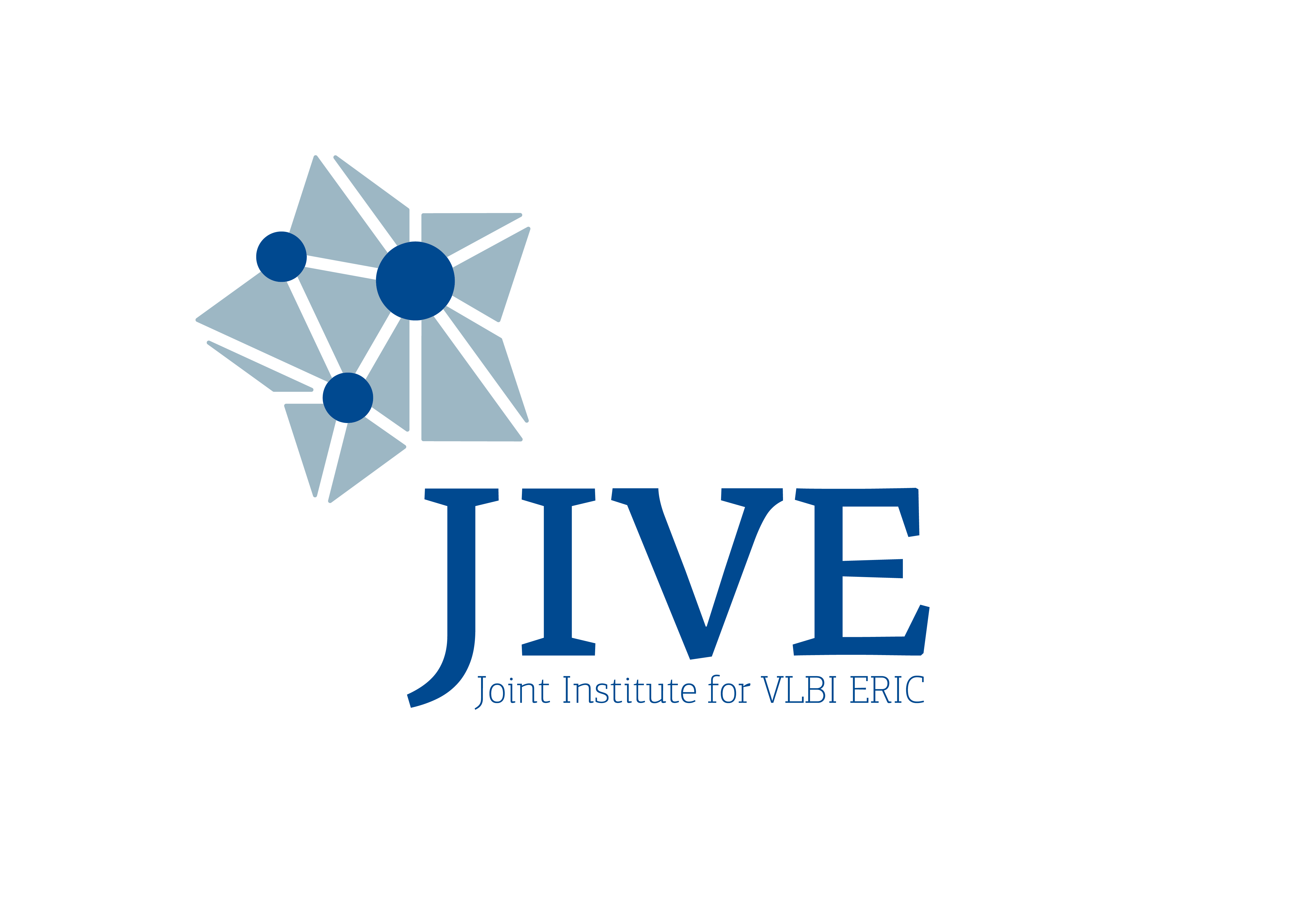
Artist's impression of filaments of gas flowing toward the accretion disk of 3C 84. (c) Luca Oosterloo (whoislvca.com)
Three astronomers from the Netherlands have proven that gas that was previously heated near a supermassive black hole and flowed to the outskirts of the galaxy and cooled down, is moving back towards the black hole. While there had been indirect evidence for this theory, this is the first time that the cooled gas moving toward the black hole has actually been observed. The researchers made their discovery when they used new techniques to examine archived data from the ALMA observatory. They share their findings in Nature Astronomy.
Supermassive black holes at the centers of galaxies have long been known to emit enormous amounts of energy. This causes the surrounding gas to heat up and flow far away from the center. This, in turn, makes the black hole less active and, let cool gas, in theory, flow back.
Three researchers from ASTRON, University of Groningen and JIVE, have now indeed shown that cool gas is flowing back. In this particular case it was cold carbon monoxide gas, but other cold gases are likely to flow back as well.
The astronomers used data collected by the ALMA observatory from the iconic galaxy 3C 84 (also referred to NGC 1275 or Perseus A). That galaxy is located 235 million light years away in the northern constellation of Perseus. It is the textbook example of what astronomers call "AGN feedback," or the recirculation of gas near a black hole. It had been known for decades that plasma jets from the supermassive black hole disrupt the hot gas around 3C 84 and that filaments of colder gas float in and around the system. And it had long been assumed that those filaments fall back toward the black hole, but it had never been proved.
"The data we used had previously been examined by another team of scientists," says lead researcher Tom Oosterloo (ASTRON and University of Groningen). "They couldn't remove the noise. We could. We used a new calibration technique that allowed us to image areas near the black hole three times sharper. And that is when we were able to detect the cool carbon monoxide gas flowing back.
In the future, the researchers plan to also map the flow of gas molecules other than carbon monoxide.
The research by Oosterloo and colleagues is unrelated to the study by Takuma Izumi and colleagues published in Science on November 3, 2023. Izumi investigated what happens to gas once it arrives in the gas disk near a black hole. Oosterloo and co-workers track gas moving from far away toward such a gas disk. Oosterloo and his team study what happens on a larger scale around a black hole and studying how that correlates with the evolution of the corresponding galaxy. Izumi's group focuses mainly on how a black hole is fed.
Scientific paper
"Closing the feedback-feeding loop of the radio galaxy 3C 84". By: Tom Oosterloo, Raffaella Morganti & Suma Murthy. In: Nature Astronomy [original | preprint (pdf)].
Tom Oosterloo
ASTRON, Netherlands Institute for Radio Astronomy & Kapteyn Astronomical Institute, University of Groningen, the Netherlands
oosterloo@astron.nl
Raffaella Morganti
ASTRON, Netherlands Institute for Radio Astronomy & Kapteyn Astronomical Institute, University of Groningen, the Netherlands
morganti@astron.nl
https://raffaellamorganti.wordpress.com/
Suma Murthy
JIVE, Joint Institute for VLBI ERIC
murthy@jive.eu
Additional information
About NOVA / www.astronomie.nl
The Netherlands Research School for Astronomy (NOVA) is the alliance of the astronomical institutes of the universities of Amsterdam, Groningen, Leiden, and Nijmegen. The mission of Top Research School NOVA is to carry out frontline astronomical research in the Netherlands, to train young astronomers at the highest international level, and to share its new discoveries with society. The NOVA laboratories are specialised in building state-of-the-art optical/infrared and submillimeter instrumentation for the largest telescopes on earth.
Press officers Marieke Baan and David Redeker | Netherlands Research School for Astronomy (NOVA) | NOVA Informatiecentrum | Science Park 904 | P.O Box 94249 | 1090 GE Amsterdam | The Netherlands | Marieke cell: +31 614 322 627 | David cell: +31 644 588 969 | h.m.baan@uva.nl | d.redeker@uva.nl | www.astronomie.nl
About JIVE
The Joint Institute for VLBI ERIC (JIVE) is a research infrastructure, serving as the support centre for the European VLBI Network (EVN). JIVE operates the EVN data processor and offers assistance to astronomers throughout the observational process with the EVN. Its primary goal is to advance the use of Very Long Baseline Interferometry (VLBI) and other radio astronomical techniques. JIVE is headquartered in Dwingeloo, the Netherlands, housed by ASTRON.
The European VLBI Network (EVN) is an interferometric array of radio telescopes spread throughout Europe, Asia, South Africa and the Americas that conducts unique, high-resolution, radio astronomical observations of cosmic radio sources. Established in 1980, the EVN has grown into the most sensitive VLBI array in the world, including over 20 individual telescopes, among them some of the world's largest and most sensitive radio telescopes. The EVN is composed of 13 Full Member Institutes and 5 Associated Member Institutes.
Communications contact: Ioanna Kazakou, tel: +31(0)521596546, email: kazakou@jive.eu
